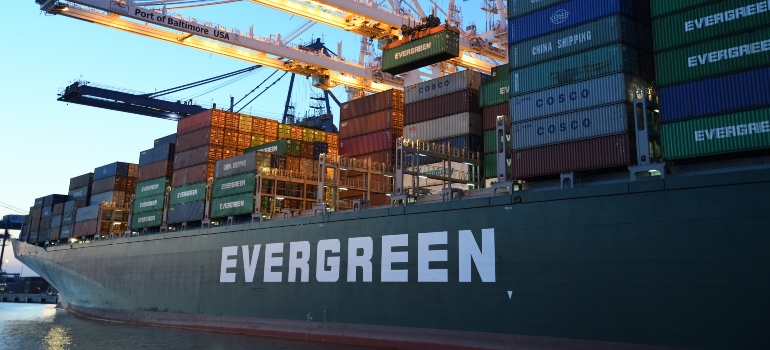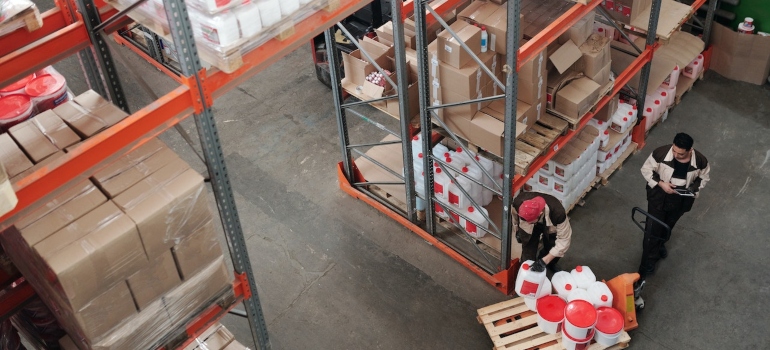Unexpected Shipping Costs to Look Out for
Shipping fees may seem straightforward when you first see them at checkout, but hidden costs can quickly turn what appeared to be an affordable purchase into an expensive headache. You might think you’re only paying for the weight of your package and the distance it needs to travel, but carriers often tack on additional fees that many people overlook. Understanding these hidden costs is crucial for both consumers and businesses. Hence, knowing what to expect can help you avoid surprises and keep your budget under control whether you’re shipping personal items, running an eCommerce store, or managing logistics for a company. Our Hansen Bros Moving & Storage article will explore some of the most common unexpected shipping costs and provide actionable strategies to help you minimize or eliminate them!
Dimensional Weight Pricing: Paying for Space, Not Just Weight
Most people assume that shipping costs are calculated based on the weight of their package. While weight does play a role, many carriers use a dimensional weight pricing model, meaning they charge you based on the space your package occupies rather than its actual weight. This can lead to significantly higher shipping costs, especially if you’re sending large but lightweight items.
What is Dimensional Weight Pricing?
Dimensional weight, sometimes called volumetric weight, is a pricing method used by some popular carriers. Instead of simply weighing a package, they use a formula to calculate the amount of space it takes up in their vehicles. The carrier will then charge you based on whichever is higher: the actual weight or the dimensional weight.
For example, suppose you’re shipping a large box filled with pillows. Even though the package may weigh only a few pounds, it takes up a lot of room in the truck. In this case, the carrier charges based on the dimensional weight, making the cost much higher than you might have expected.

How to Avoid High-Dimensional Weight Charges
Carriers measure package dimensions precisely, so reducing the volume of your shipment can lead to lower fees. This is how to avoid high dimensional weight charges:
- Use compact, appropriately sized shipping crates in Seattle to reduce wasted space.
- Compare different carriers—some have more lenient dimensional weight rules.
- Look into flat-rate shipping options that ignore package dimensions.
Be mindful of how dimensional weight pricing works, so you can take proactive steps to minimize this cost and keep your shipping expenses manageable.
Residential Delivery Surcharges: The Home Delivery Trap
If you’re shipping an item to a home address rather than a business, you might be paying more than you realize. Many major carriers impose a residential delivery surcharge, adding extra fees simply because your package is being sent to a residential area. This is an often-overlooked cost that can significantly increase your shipping expenses, especially for frequent shipments.
Why Home Deliveries Cost More
Delivering to a home is less efficient than delivering to a business. In commercial areas, delivery drivers can drop off multiple packages at a single location, making the process quick and cost-effective. Residential areas, however, often require drivers to make multiple stops for individual deliveries, using more time and fuel. To offset this inefficiency, carriers pass the extra cost on to you in the form of a residential surcharge.
How to Avoid This Extra Charge
One way to minimize these unexpected shipping costs is to use a business address if you have access to one, as businesses generally do not incur these extra charges. Some carriers also provide the option to have packages delivered to a pickup location, such as a carrier-owned store or an authorized retailer, where you can retrieve your shipment at no additional cost. Choosing regional or alternative delivery services may also help, as some companies offer better rates for residential deliveries compared to major international carriers.
Fuel Surcharges: When Shipping Costs Rise with Gas Prices
Shipping costs aren’t always fixed—many carriers include fuel surcharges, which fluctuate based on market fuel prices. These charges can add an unpredictable element to your shipping expenses, as they are typically adjusted weekly or monthly to reflect changes in fuel costs.
What Are Fuel Surcharges?
Fuel surcharges exist simply because shipping companies in Seattle rely on fuel-powered vehicles to transport items, and when fuel prices rise, so do their operating expenses. Instead of absorbing these costs, they pass them along to consumers in the form of surcharges. The tricky part is that these fees are not always clearly advertised, and they can vary significantly from one carrier to another.
How to Keep Fuel Costs from Surprising You
One way to manage fuel surcharges is to consolidate multiple shipments into one whenever possible, reducing the number of individual trips needed. Ground shipping is often less affected by fuel surcharges than air shipping, so choosing a slower but more cost-effective shipping method may help you save money. Since different carriers update their surcharge rates at different times, staying informed and comparing rates before shipping can also be a smart way to keep costs under control.

Remote Area and Extended Delivery Fees: The Price of Distance
If you live in or are shipping to a rural or remote area, you might be in for a surprise when you see the final shipping cost. Many carriers impose remote area surcharges, which are additional fees for deliveries to locations that are far from major shipping hubs.
What Qualifies as a Remote Area?
Carriers define “remote areas” based on zip codes, geography, and delivery accessibility. These locations typically require extra travel time, fewer delivery routes, and sometimes special transportation methods. To compensate for the additional logistical challenges, shipping companies charge a premium for deliveries to these areas.
Why This Charge Can Be Difficult to Avoid
Delivery to a major city may be quick and efficient, but shipping to a mountain town or an island may require additional handling, longer routes, or even multiple shipping partners, all of which drive up costs. Hence, to avoid being caught off guard, it’s a good idea to check whether a remote area surcharge applies before finalizing a shipment. Many carriers offer online tools where you can enter an address to see if extra fees apply.
Additionally, different shipping companies may have varying definitions of what constitutes a remote area, so comparing options may reveal a more affordable carrier for your specific needs. In other words, if you’re shipping to or from the Pacific Northwest, working with specialized freight companies in Seattle can help you find cost-effective solutions for remote and long-distance deliveries.
Sneaky Handling and Processing Fees
Sometimes, the price you see for shipping isn’t the full story. Many retailers and shipping carriers add unexpected shipping costs like handling and processing fees that aren’t always clearly disclosed upfront. These fees cover the additional labor, packaging materials, or administrative work involved in shipping your order. While they might seem small on their own, they can quickly add up, especially when ordering multiple items or using certain services.
What Are Handling and Processing Fees?
Handling fees often apply when a shipment requires special attention, such as fragile items that need extra padding, temperature-sensitive goods that require insulation, or oversized packages that need manual handling. Processing fees, on the other hand, can be related to order verification, fulfillment, or other administrative costs that the company passes on to you.
How to Spot and Avoid These Fees
The tricky thing about handling and processing fees is that they not always list separately in your shipping estimate. Some retailers bundle them into the total shipping cost, while others add them at checkout as a separate line item. Before confirming a purchase, always check the final breakdown of charges.
If a retailer charges excessive handling fees, consider looking for alternative sellers or shipping options. Some businesses allow customers to pick up their orders in-store or at designated pickup points, bypassing handling fees altogether.

The Hidden Threat of Customs Duties and Import Taxes
If you’re ordering products from another country, customs duties, and import taxes can be a costly surprise. Governments impose these charges to regulate trade and generate revenue, and they vary depending on the destination country, the type of product being shipped, and its declared value. Reputable international commercial shipping companies offer reliable and cost-effective global logistics solutions, but understanding their pricing structures and regulatory requirements ensures a smooth shipping experience without unexpected fees.
Why International Shipments Come with Extra Costs
Customs duties and import taxes can be especially frustrating because they are often unpredictable. Some countries have low thresholds before taxes apply, meaning even inexpensive purchases can be hit with extra charges. Additionally, some goods are subject to higher tariffs based on their classification under international trade laws. If you’re unaware of these potential costs, your package could be at customs until you pay the required fees.
How to Reduce or Avoid Import Taxes
To avoid surprise customs charges, check if the retailer provides a “duty-paid” shipping option, where taxes show in the upfront price. If you’re frequently purchasing from international sellers, research the duty-free threshold for your country, as some regions allow imports below a certain value to pass through without extra charges. When possible, ordering from local suppliers instead of international sellers can help you sidestep import taxes altogether.
Special Packaging Fees: Paying Extra for Protection
Certain shipments require special packaging, and carriers often charge unexpected shipping costs for handling fragile, oversized, or hazardous items. If your package needs reinforced boxes, protective cushioning, or temperature-controlled packaging, expect to pay a premium. Some companies even require specific packaging for insurance coverage, meaning that if you don’t use their approved materials, you won’t be able to claim compensation if something goes wrong.
Why Some Packages Cost More to Ship
These fees can be frustrating because they often aren’t visible in the initial shipping estimate. You might think you’re paying a set amount for shipping, only to discover that the cost has increased due to special packaging requirements. This is particularly common for breakable items like glassware, electronics, and artwork, as well as perishable goods that need insulated packaging.
How to Minimize Packaging Costs
To avoid paying unnecessary packaging fees, consider packing items yourself using high-quality materials that still meet carrier standards. Some retailers and carriers offer free packaging for certain services. If you’re shipping frequently, buying packaging materials in bulk can also help reduce costs over time.

Return Shipping and Restocking Fees: The Cost of Sending It Back
Many consumers assume that returning a product is free, but in reality, return shipping can come with unexpected costs. While some retailers offer free returns, others require customers to cover the shipping costs themselves, which can be expensive—especially for large or heavy items. Additionally, restocking fees are another sneaky cost to watch out for.
Why Returning Items Can Be Expensive
Return shipping costs vary depending on the retailer’s policy and the type of product customers return. Electronics, furniture, and custom-made items are particularly notorious for restocking fees, which can range anywhere from 10% to 25% of the item’s price. If you’re unaware of these fees beforehand, you could end up getting back far less than you originally paid.
How to Avoid Return Shipping Costs
Before making a purchase, always read the seller’s return policy carefully. Look for businesses that offer free return shipping or have a return center where you can drop off items instead of mailing them back. Some credit cards offer purchase protection benefits that reimburse return shipping costs, so checking with your card provider can be a smart move. If you’re unsure about an item, consider buying from a retailer with a generous return policy rather than one that charges high restocking fees.
Stay Ahead of Shipping Costs Before They Surprise You
Unexpected shipping costs can quickly turn a great deal into an expensive hassle. From dimensional weight pricing and residential surcharges to customs duties and return shipping fees, these hidden charges can add up if you’re not careful. Understanding how these costs work and where they are most likely to appear is the first step in avoiding them.
The key to managing shipping expenses is awareness and planning. Before making a purchase, check the fine print on shipping policies, compare different carriers, and explore options like flat-rate shipping or local pickup points to avoid unnecessary fees. If you frequently order from international sellers, learning about import taxes and duty thresholds can save you from unexpected costs. And when it comes to returns, always know the store’s policy before buying to avoid costly restocking fees.
Why Choose Us
History
Hansen Bros. Moving & Storage is locally owned and operated by the same family for four generations, since 1890. We have a well-established reputation for service quality and reliability with a high percentage of repeat household and commercial clients.
Professionalism
We’re a certified ProMover by the American Moving and Storage Association with A+ rating with the Better Business Bureau, voted “Best in Western Washington” in 2009 and from 2011 to 2016 by KING5. Our company is fully licensed and insured and member of WMC and AMSA.
Value
Hansen Bros. Moving & Storage provide free, no-obligation in-home estimate and competitive rates, including low minimum rates for shipments moving under 300 miles. We’ve set a refund policy for unused packing materials and three Puget Sound locations to help clients save on travel fee costs.



